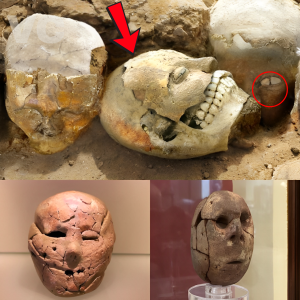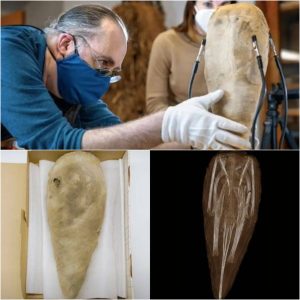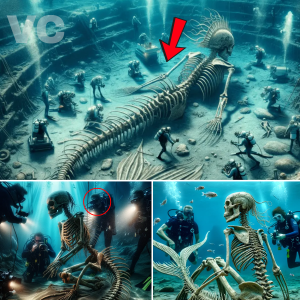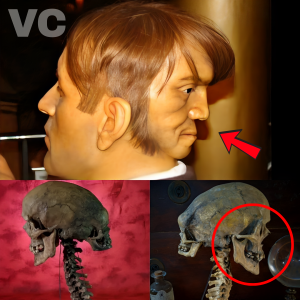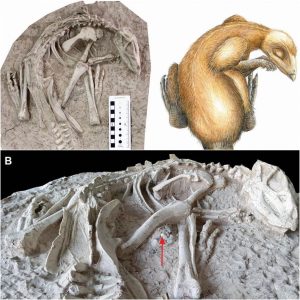Archaeologists have found the 780,000-year-old remains of a cooked carp-like fish at the wetland Acheulean site of Gesher Benot Ya’aqov in Israel.

Ancient inhabitants of the Gesher Benot Ya’aqov site in Israel likely used some kind of earth oven that maintained a temperature below 500 degrees Celsius to cook their fish. Image credit: Ella Maru / Tel Aviv University.
Fish contain a high amount of omega fatty acids that, together with other nutrients, are essential for healthy growth, brain development and overall health.
It has been suggested that the access of early humans to aquatic food webs could have had a considerable and advantageous impact on their cognitive abilities and fertility.
Although fish can be eaten raw, cooked fish are more nutritious, safer to eat, easier to digest and, when cooked by steaming or baking, but not grilling, they retain their fatty acid contents.
When fish cooking first began, however, is still unknown and there is no consensus as to when hominins first developed the ability to control fire and cook.
There is some evidence to suggest that Homo erectus already practiced a controlled use of fire approximately 1.7 million years ago. However, evidence regarding the use of heat specifically for food preparation by this human ancestor is inconclusive and controversial.
While it is likely that early fire-using hominins had already cooked their food, definitive evidence of this practice was by early Homo sapiens and Neanderthals 170,000 years ago.
The new analysis of the remains of a large carp-like fish recovered from Gesher Benot Ya’aqov, a waterlogged site located in the northern Jordan Valley, on the shores of paleo-Lake Hula, pushes that date back 610,000 years.

“This study demonstrates the huge importance of fish in the life of prehistoric humans, for their diet and economic stability,” explained Tel Aviv University’s Dr. Irit Zohar and Hebrew University of Jerusalem’s Dr. Marion Prévost.
“Further, by studying the fish remains found at Gesher Benot Ya’aqob we were able to reconstruct, for the first time, the fish population of the ancient Hula Lake and to show that the lake held fish species that became extinct over time.”
“These species included giant barbs (carp like fish) that reached up to 2 m in length.”
“The large quantity of fish remains found at the site proves their frequent consumption by early humans, who developed special cooking techniques,” they added.
“These new findings demonstrate not only the importance of freshwater habitats and the fish they contained for the sustenance of prehistoric man, but also illustrate prehistoric humans’ ability to control fire in order to cook food, and their understanding the benefits of cooking fish before eating it.”
In their study, the authors focused on the pharyngeal fish teeth found within or in proximity to phantom hearths, that is, clusters of burnt flint microartifacts, at the Gesher Benot Ya’aqob site.
Most of the teeth belonged to two large species of primary freshwater fish from the family Cyprinidae: the Jordan barbel (Luciobarbus longiceps), an endemic species to the Jordan River basin; and the Jordan himri (Carasobarbus canis).
These two species are regarded as a tasty and valuable source of nutrients, protein and unsaturated fatty acids. Their meat, which is rich in fat, is succulent.
“In this study, we used geochemical methods to identify changes in the size of the tooth enamel crystals, as a result of exposure to different cooking temperatures,” said Dr. Jens Najorka, a researcher at the Natural History Museum, London.

“When they are burnt by fire, it is easy to identify the dramatic change in the size of the enamel crystals, but it is more difficult to identify the changes caused by cooking at temperatures between 200 and 500 degrees Celsius.”
“The fact that the cooking of fish is evident over such a long and unbroken period of settlement at the site indicates a continuous tradition of cooking food,” said Hebrew University of Jerusalem’s Professor Naama Goren-Inbar.
“This is another in a series of discoveries relating to the high cognitive capabilities of the Acheulean hunter-gatherers who were active in the ancient Hula Valley region.”
The scientists suggest that the location of freshwater areas determined the route of the migration of early humans from Africa to the Levant and beyond.
“Exploiting fish in freshwater habitats was the first step on prehistoric humans’ route out of Africa,” they said.
“Early humans began to eat fish around 2 million years ago but cooking fish — as found in this study — represented a real revolution in the Acheulean diet and is an important foundation for understanding the relationship between man, the environment, climate, and migration when attempting to reconstruct the history of early humans.”

The findings appear this week in the journal Nature Ecology and Evolution.
